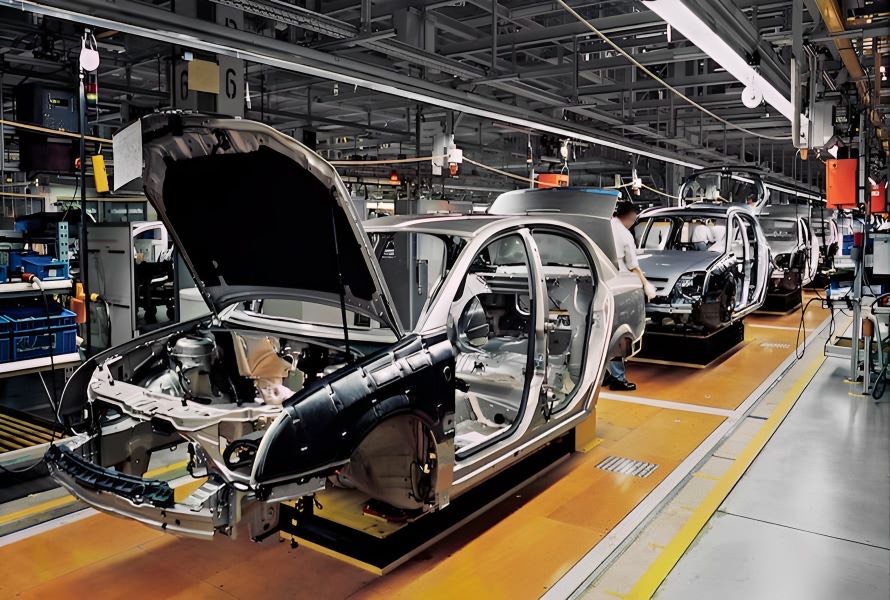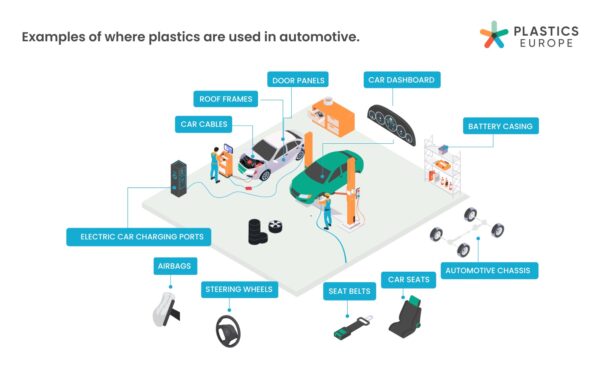New EU Rules Redefine Automotive Plastics for Sustainability in 2025

After decades of gradual change, the EU’s updated End-of-Life Vehicles Directive drives a fundamental shift in automotive design and manufacturing.
The European Union introduced the original End-of-Life Vehicles Directive (ELV Directive 2000/53/EC) in 2000 and became effective between 2002 and 2003. This directive laid the foundation for vehicle recycling and recovery, focusing on reducing waste and encouraging the reuse of metals, glass, and plastics. However, as vehicles grew more complex, used more polymers, and sustainability goals increased, the EU saw the need for stricter and more detailed regulations.
You can also read: Painted Plastics Recycling in Automotive.
In mid-2025, a suite of updated legislative measures began coming into force. These updates form part of the EU Circular Economy Action Plan and the Sustainable Products Initiative. They set legally binding requirements for recycled content in plastics, digital product passports for traceability, and design-for-recycling mandates to ensure dismantling and material recovery processes are efficient and verifiable. This regulatory shift moves the automotive industry toward full circularity, making compliance a core engineering challenge.
Plastics in Vehicles: Component Applications and Regulatory Implications

Examples of plastics used in automotive. Courtesy of Plastics Europe.
Plastics comprise about 20% of a modern vehicle’s weight and appear in interior, exterior, and structural parts. Interior components like dashboards, door panels, center consoles, and seat bases often use ABS, PC/ABS blends, and modified polyolefins. These materials now face stricter rules, including minimum recycled content, usually 25% or more by 2030, and must meet recyclability standards and traceability through digital product passports.
Manufacturers make exterior parts, such as bumpers, fenders, and mirror housings, using polypropylene (PP) and thermoplastic olefins (TPOs). These parts often receive multi-layer paints and primers, which make recycling more difficult. New EU rules encourage the development of easy-to-remove coatings, like laser-removable layers and low-temperature debonding primers, to simplify recycling.
Manufacturers use glass-fiber-reinforced polypropylene or polyamide 6 to make under-the-hood and underbody parts, such as battery enclosures, wheel arch liners, and engine shields. Recycling these materials is challenging. The fibers can contaminate the process, and heat may damage the polymers. To meet regulations, OEMs must either redesign parts for easier recovery or provide proven chemical recycling solutions.
Design and Material Innovations
The updated legislation sets clear rules for designing products that allow easy disassembly and recycling. It limits the use of permanent adhesives, overmolded joints, and fasteners that block separation, unless separating them requires little energy and causes no damage. As a result, manufacturers now rely more on mechanical fasteners, reversible adhesives, and laser welding to ensure both durability and recyclability.
Starting in mid-2025, manufacturers must embed detailed material data into components through mandatory digital product passports. These passports list polymer types (following ISO 1043), additives and fillers, joining methods, and instructions for end-of-life handling. This level of traceability helps improve sorting and recycling automation, supports circular supply chains, and aids regulatory audits.
Manufacturer and Supplier Initiatives
Leading OEMs and suppliers have acted quickly to meet changing regulations. Stellantis plans to use 40% recycled content in vehicle plastics by 2030. The company partners closely with European recyclers to obtain post-consumer polypropylene and polyamide compounds. They focus on non-visible structural parts like battery trays and underbody shields, ensuring full traceability and compliance.
BMW Group is testing interior panels made entirely from recycled thermoplastics. They focus on using a single material to make disassembly and closed-loop recycling easier. Their i Vision Circular concept includes digital material passports, accessed through QR codes embedded in the parts, which improve transparency throughout the vehicle’s life.
Tier 1 supplier Faurecia has developed PP and ABS compounds under its NAFILean and MATTrim brands, tailored for injection molding with up to 50% recycled content. These materials offer the dimensional stability and surface quality required for automotive interiors. Faurecia is also rethinking seat structures by replacing permanent adhesives with mechanical fasteners and laser-welded joints to enhance recyclability.
BASF leads the way in chemically recyclable polyamide grades, such as Ultramid Ccycled, which use pyrolysis oil feedstock certified through mass balance. These high-performance polymers meet strict mechanical and thermal standards, helping OEMs reach recycled content targets without sacrificing component quality.
Digital Systems and Lifecycle Integration
To manage material tracking and meet regulations, OEMs use product lifecycle management (PLM) systems with recyclability assessment tools. Manufacturing execution systems (MES) link polymer data for each batch to digital passports. This setup helps track materials clearly through the process.
Recycling facilities now use AI-powered robots for sorting. These robots rely on data from digital passports and visual recognition to identify polymers and dismantling features. This method boosts recovery rates and helps meet EU regulations.
A New Era in Automotive Plastics Engineering
The EU’s 2025 directive introduces big changes to automotive plastics engineering. Engineers now need to choose and design polymers that support circular use, easy recycling, and clear traceability, while still meeting the usual standards for strength and appearance.
Polymer engineers and designers play a key role. They must deliver compliant materials, develop easy-to-disassemble parts, and support reliable data systems. Meeting these challenges will help the automotive industry build truly sustainable, resource-efficient vehicles in line with the EU’s Green Deal.

SPE & PLASTICS is a Great Partnership
I was the Chairman for the SPE Special Quality Interest Group back in the early 1990s. I was also Author, ISO FOR PLASTIC, presented and published at ANTEC 1993.
Google P&Y Management Resources for information on my business specializing in plastics manufacturing and business Quality Management, training, and certifications.
I would like to re-start a QUALITY Focus Group with the new merger.
I look forward to hearing from you.